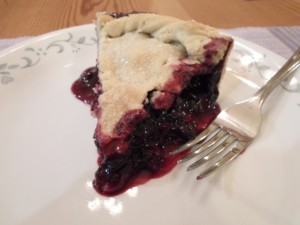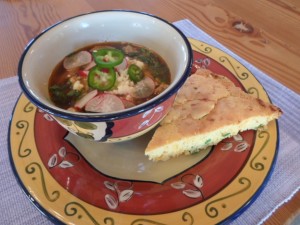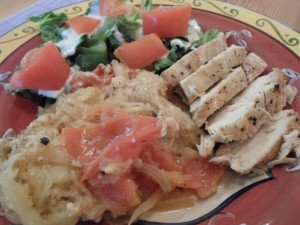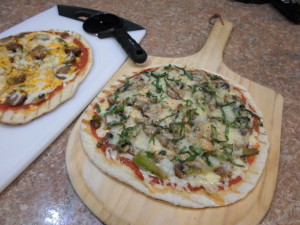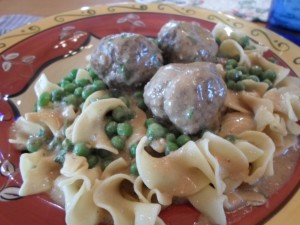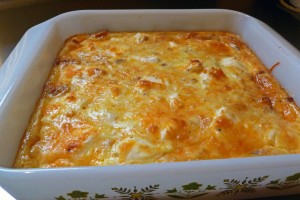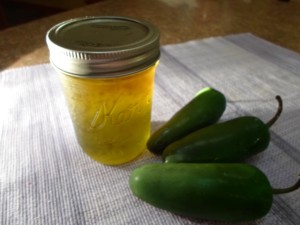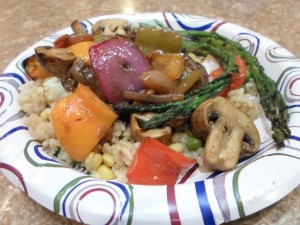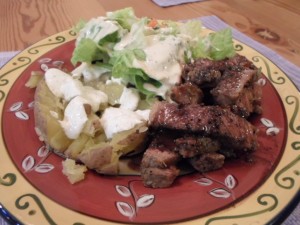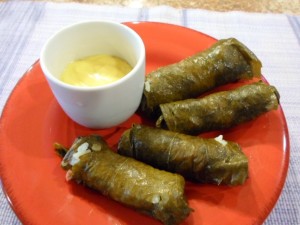Blueberries are my favorite fruit. I buy them fresh, frozen and dried to eat as a snack or with my morning yogurt. A few years ago I was at the grocery store looking at a high-priced package of the fresh berries, contemplating if they were worth it. A nice older gentlemen leaned over next to me and quietly said, “You know, you can grow those.” I laughed and said that I probably should.
That next spring, I bought four bushes from a local nursery and planted them. Three thrived and the fourth succumbed to an ant colony that I still can’t seem to get rid of. I didn’t expect berries that first year, but thought I’d get a few the second. I saw the flowers bloom, but no fruit. The third year, I picked about a handful and was pretty disappointed. I planted three more bushes of another variety because I had read that planting multiple types together is a good idea. I just can’t remember why.
Last year the first three bushes were big, beautiful and full of flowers, and a little later had green berries. I watched the berries dwindle over the passing weeks. I was stumped until the day I found several of my hens gathered around the bushes. They would fly up, flap their wings and beat at the bushes. When they landed, they quickly began to peck the ground below. My free-to-roam-where-they-please chickens were eating all of my berries before they even had a chance to ripen. No wonder their yolks are a deep orangey-yellow.
This year I wised up and pounded in T-posts and wired goat fencing to completely enclose the bushes. I am pleased to say that as of yet, no chickens have scaled the fence, and the wild bird population hasn’t damaged much.
A week ago I picked 3.5 pounds of berries from those first three bushes. Last weekend, my son picked 8 more. There are still ripening berries to be picked.
I froze a gallon bag and I also made a large blueberry pie. It was so large I ended up cooking it in a casserole dish.
Blueberry Pie
6 c. blueberries, rinsed and dried
1 c. sugar
1/3 c. flour
1 tsp. Kosher salt
1 tsp. fine lemon zest
1 Tbsp. freshly squeezed lemon juice
2 Tbsp. cold butter, cubed
In a large bowl, stir together the blueberries, sugar, flour, salt and lemon zest. Let sit while preparing the pie crust (recipe to follow).
Refrigerate the dough for at least 30 minutes. Then place on a well-floured surface. Cut the dough in half and roll out the bottom pie shell first. Place dough in pie pan (or casserole dish) being careful to fill the pan without stretching the dough.
Pour the blueberry mixture into the shell. Drop cubes of butter evenly on top of the fruit and drizzle on the lemon juice. Then roll out the top shell. Drape over the pan and tear away extra dough, leaving 1/2 to 1 inch all around. Seal the top and the bottom shells together as you prefer. I like to gently twist and tuck the dough all around. When it comes out of the oven, the edge resembles a rope circling the pie.
I like to brush butter over the top and sprinkle with sugar. Then bake in a 375-degree oven for 20 minutes. If the crust is browning too quickly, put foil over the edges and cook for another 25 minutes. I checked my pie at that point and decided to add another 10 minutes. It probably needed more time because it was so large. When I pulled it from the oven, it was golden brown and the juices were bubbly.
Pie Dough
3 c. flour
1 Tbsp. sugar
1 tsp. Kosher salt
2 sticks cold unsalted butter, cubed
1/2 cup ice water
In a food processor, pulse the flour, sugar and salt a few times to combine. Then add really cold cubes of butter. Pulse until the mixture looks crumbly – about 12 times. Then drizzle in cold water while continuing to pulse until the dough clumps together. Drop the dough on a floured surface and gently press together to form a ball. Cover with plastic wrap and place in the fridge to rest.
We’ll have the rest of the berries for breakfasts and snacks. But I also really enjoy them in a spinach salad. Adding fruit to greens perks them up and can be a nice change.
Spinach and Berry Salad
5-6 c. fresh spinach, cleaned and torn
1/4 c. olive oil
1/8 c. balsamic vinegar
1/2 Tbsp. honey
Salt and freshly cracked black pepper, to taste
1 c. strawberries, cleaned and halved
1 c. blueberries, rinsed and dried
1 c. pecans
Place spinach in a large bowl. Whisk together olive oil, balsamic vinegar and honey. Pour over spinach and sprinkle with salt and pepper. Toss the spinach with the dressing. Top the salad with strawberries, blueberries and pecans. Shaved pieces of Parmesan cheese also make a nice salty-nutty addition.
*** Quotes from Julia Child ***
“A party without cake is just a meeting.”
“The only time to eat diet food is while you’re waiting for the steak to cook.”
“If you’re afraid of butter, use cream.”
“I think every woman should have a blowtorch.”

